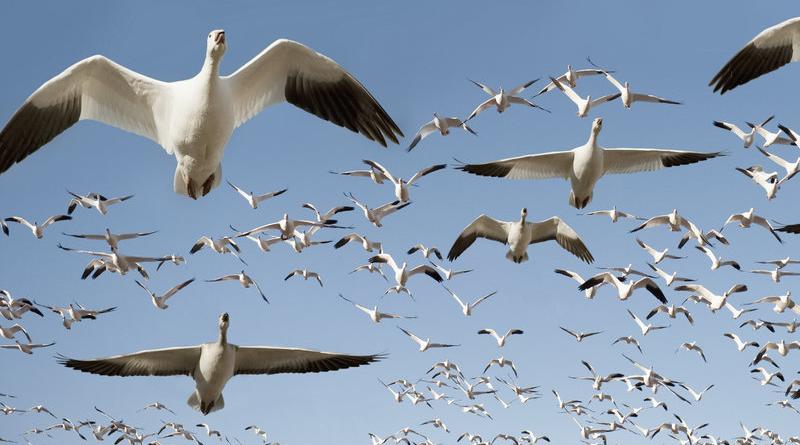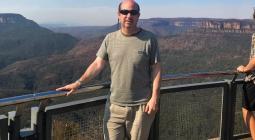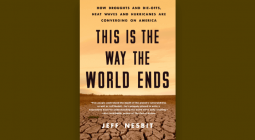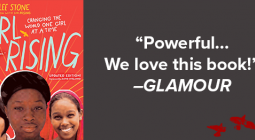New Book Argues Migration Isn't A Crisis — It's The Solution

Climate change has put organisms on the move. In her new book, The Next Great Migration, Science writer Sonia Shah writes about migration — and the ways in which outmoded notions of "belonging" have been used throughout history to curb what she sees as a biological imperative.
There is a tendency to view plants, animals and people who cross into a new territory as a threat to the current habitat. But Shah says there's another way to think about these "invaders."
Humans "thrive in such widely variable places — from the Tibetan plateau to the middle of rainforests," she says. "You have to think about the whole picture of, why did we evolve this way? It's because its benefits outweighed its risks over the long term."
Ultimately, Shah wants to challenge the idea of migration as a problem: "It seems to me that it could be just the opposite: That migration isn't the crisis. Migration is the solution."
Shah's 2016 book, Pandemic, explored the increasing threat of viral outbreaks.
Interview Highlights
On the origins of the idea that human migration was problematic
I traced most of these ideas back to Carl Linnaeus, who's considered the father of modern taxonomy. He's this 18th-century Swedish naturalist, and he kind of decided for all of us: Where does everything belong? He named everything. He came from a very Christian household, and like most naturalists of the time, he was very religious. He thought of nature as an expression of God's perfection. So everything was in its rightful place for him. ...
Wherever he found things, that's where they "belonged," and that extended to his human taxonomy. So he decided that the people in Africa belong in Africa, that people in America, they belong in America, etc., to such an extent that he decided that all of these different peoples on different continents didn't have a shared ancestry, a shared migration history, but were actually separate subspecies of humans. And, in fact, he called Africans even less than human, that they were sort of a hybrid between real humans and this other archaic, mythical human that he called "troglodytes."
But those ideas were incredibly influential because we see them today in our ideas about race and about where people belong and where wild species belong. When a wild creature crosses from a different place into a new territory, we think of it as an invasive; we call it an alien. We see hints of all of that in the way we make policy around immigration and newcomers in places around the world.
On how Linnaeus' ideas opened the door for junk "race science" within the scientific community
[The "race" scientists] really felt like immigration would cause a biological catastrophe, because they thought that people from Africa or Polynesia or elsewhere in the world were biologically distinct. And so if they came into our country and started to partner with "native" people, with local people, that they would have these hybrid children that would be like deformed, essentially degenerated and deformed. They did all this science to try to prove that, which, by modern standards is not scientific, as we understand it at all. But they were scientists. So they had that kind of authority of being people who are looking into this really deeply.
But even leading people in the American Public Health Association and President Calvin Coolidge actually wrote about what he called "biological laws," according to which divergent people could not mix or blend. And the Public Health Association said that if we allowed immigrants in, and these are people who are of different subspecies to mix with native people, that would lead to hybrid generations that would lead to, I think the quote, was "absolute ruin" for American society.

On what we've learned from tracking the migrations of animals
With solar technology and GPS, we can track animals 24/7 over the course of their lifetimes, sort of continuously. So you can see the full picture of the way they move. And what they're finding is that these creatures are moving farther and faster and in more complex and responsive ways, dynamic ways than anyone ever thought before. What's funny is we've created all these parks and reservations to kind of protect animals, and when we've actually now studied well, where do they actually go? It turns out the giraffes, they're supposed to stay in the park in Ethiopia that we set aside for them, in fact, they're crossing borders and going much farther than that. The turtles are swimming well beyond the boundaries of the marine protected-zones we've made up for them. We see animals are moving sort of en masse now because of the climate crisis.
On rethinking invasive species like "murder hornets" and lanternflies
I don't deny that those disruptions are occurring, but I dispute what the reason is behind it. There's so many species that are moving around, and to think that every newcomer who comes into your territory is sort of alien to it as opposed to the natives who belong there, I think that's where we go wrong. I mean, it's interesting with the hornets. This is very typical of how we respond to new novel creatures that we think are out of place. I mean, we were calling these hornets, "murder hornets," which is a very pejorative way to talk about anything, really. Lions also are predators, we don't call them "murder cats." ...
What they're really threatening is honeybees and stuff, which are also not native either. They're from Europe. So, I'm not saying the disruption doesn't exist — but it's the way we think about it. What we know is that only 10 percent of species that move into new places are able to establish themselves. And then only 10 percent of those become sort of pests, cause disruptions, unwanted effects on either human health or our economies or on already resident species. So we're talking about one percent of all the species that are moving around actually causing these problems of what we call invasiveness. And yet we have this approach that's embedded in our conservation policies, like the Convention on Biological Diversity, which recommends that we detect species that are new in our environments early, that we repel them and that we eradicate them before they are able to establish themselves. And the idea there is that you get rid of them because you're presuming that they're going to cause problems. And so that presumption, I think, is what is problematic, because especially right now, because the climate is changing, and we need species to move into new places and we don't want to repel them as invaders or aliens just because they're moving into new places, which is what's going to allow them to survive.
On going to borders to report on human migration
Right now, we have more borders around the world ... fortified with walls and other barriers than ever before. And ... it hasn't repelled movement. It hasn't made people stay home. It's just made migration a lot more deadly. So people are risking their lives now to find refuge from bombs and beheadings and poverty and the rest of it. So that was what was most striking to me. And the thing about reporting on migration is you basically can go anywhere because there's migration happening sort of behind-the-scenes everywhere you go. So what I wanted to do is look at, well, where are people getting stuck? Whether it's refugee camps or border checks or dying in the desert on the U.S.-Mexico border.
On the underlying biodiversity crisis behind the coronavirus and other pathogens
I think we need to look more deeply at the way we're interacting with nature. We need to look more deeply at the crisis of biodiversity, which is really the fundamental driver of all of these spillover pathogens coming into human populations. I mean, it's not just the novel coronavirus. It's also Ebola and Zika and HIV in the 1980s and West Nile Virus and new kinds of Lyme disease, a tick-borne disease. We have a whole host of these pathogens that are coming out of animal populations into humans because we are destroying wildlife habitat at such a huge rate. We're losing 150 species every day. So this biodiversity crisis is the fundamental driver. So we need to, I think, look at that more deeply and consider human health to be connected to the health of our livestock, our wildlife and our ecosystems more generally.
Sam Briger and Seth Kelley produced and edited this interview for broadcast. Bridget Bentz, Molly Seavy-Nesper and Meghan Sullivan adapted it for the Web.
2 June 2020
npr




